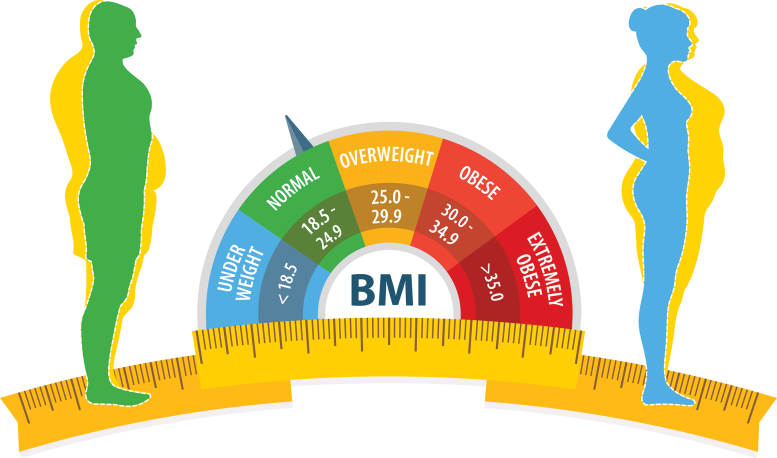
Posted on 03/22/2025 4:59:49 PM PDT by Red Badger
Critics are once again questioning the efficacy of BMI as a tool for diagnosing obesity, suggesting that a more holistic approach to assessing health might be needed.
Instead of relying on this outdated metric, experts recommend using body fat percentage, a method inspired by Archimedes’ ancient principles, which offers a more precise measure of health risks associated with obesity.
Rethinking BMI: A New Year’s Resolution
Once again, the body mass index (BMI) is under scrutiny. This time, a group of experts commissioned by The Lancet is challenging its validity as a diagnostic tool for obesity. They argue that doctors should assess a patient’s overall health rather than relying solely on this flawed measurement.
BMI is determined by dividing a person’s weight in kilograms by the square of their height in meters. According to standard classifications, a BMI below 18.5 is considered “underweight,” while the “normal weight” range falls between 18.5 and 24.9. A BMI between 25 and 29.9 is categorized as “overweight,” and anything above 30 is classified as “obese.”
Given the significant health risks associated with obesity and even being overweight, one might assume that BMI is a well-founded and reliable metric. However, that assumption is misleading.
The Flaws of BMI in Health Assessment
Although people with higher body fat often have higher BMIs, the index itself is a poor diagnostic tool. One of its biggest flaws is its inability to differentiate between fat and muscle. This matters because excess body fat is strongly linked to heart disease risk, whereas BMI alone is not.
Recent research suggests that if obesity were defined by body fat percentage rather than BMI, as many as 15–35% of men classified as “non-obese” by BMI would actually be considered obese. This highlights BMI’s shortcomings and reinforces the need for more accurate ways to assess health.
However, it turns out that BMI both under- and over-diagnoses obesity. The same study found that up to half of the people that BMI classified as overweight and over a quarter of BMI-obese individuals were metabolically healthy.

BMI Infographic; Body Mass Index (BMI) is a widely used measurement that calculates a person’s weight in relation to their height, providing an estimate of body fat and overall health. It is calculated by dividing an individual’s weight in kilograms by the square of their height in meters (kg/m2). BMI is often utilized to assess whether a person is underweight, normal weight, overweight, or obese, but it has limitations as it does not account for factors such as muscle mass or distribution of fat. As a result, it may not provide a comprehensive representation of an individual’s health or risk for certain conditions.
Archimedes’ Insight: An Ancient Solution for Modern Health
BMI is clearly not an accurate indicator of health. Instead, it would be useful to access a direct measure of the percentage of body fat that is so closely linked to cardiovascular disease. To do that we need to borrow a 2,000-year-old idea from the ancient city-state of Syracuse on the island of Sicily.
Around 250 BC, Archimedes, the pre-eminent mathematician of antiquity, was asked by Heiro II, king of Syracuse, to help resolve a contentious issue. The king had commissioned a crown of pure gold. After receiving the finished crown and hearing rumors of the metalsmith’s less-than-honest reputation, the king worried that he had been cheated and that the metalsmith had used an alloy of gold and some other cheaper, lighter metal. Archimedes was charged with figuring out if the crown was a dud without taking a sample from it or otherwise disfiguring it.
The illustrious mathematician realized that he would need to calculate the crown’s density. If the crown were less dense than pure gold, he would know the metalsmith had cheated. The density of pure gold was easily calculated by taking a regularly shaped gold block, working out the volume, and then weighing it to find its mass. Dividing the mass by the volume gave the density. So far, so good.
Archimedes’ Principle: A Revolutionary Approach to Measuring Body Fat
Weighing the crown was easy enough, but the problem came when trying to work out its volume, because of its irregular shape. This problem stumped Archimedes for some time, until one day he decided to take a bath.
As he got into his extremely full tub, he noticed that some of the water overflowed. As he wallowed, he realized that the volume of water that overflowed from a completely full bath would be equal to the submersed volume of his irregularly shaped body. Immediately he had a method for determining the volume, and hence the density, of the crown.
Vitruvius tells us that Archimedes was so happy with his discovery that he jumped straight out of the bath and ran naked and dripping down the street shouting “Eureka!” (“I have found it!”) – the original eureka moment.
Sadly, it is unlikely that this is actually how Archimedes solved the problem. Instead, it is more likely that Archimedes used a related idea from hydrostatics (the mechanical properties and behavior of fluids that are not in motion), which would later become known as Archimedes’ principle.
The principle states that an object placed in a fluid (a liquid or a gas) experiences a buoyant force equal to the weight of fluid it displaces. That is, the larger the submerged object, the more fluid it displaces and, consequently, the larger the upward force it experiences. This explains why huge cargo ships float, providing the weight of the ship and its cargo is less than the weight of water they displace.
Using this idea, all Archimedes needed to do was to take a pan balance with the crown on one side and an equal mass of pure gold on the other. In air, the pans would balance. However, when the scales were placed underwater, a fake crown (which would be larger in volume than the same mass of denser gold) would experience a larger buoyant force as it displaced more water, and its pan would consequently rise.
Measuring Body Fat: Archimedes’ Legacy in Modern Health Metrics
It is precisely this principle from Archimedes that is used when accurately calculating body-fat percentage.
A subject is first weighed in normal conditions and then reweighed while sitting completely submerged on an underwater chair attached to a set of scales. The differences in the dry and underwater weight measurements can then be used to calculate the buoyant force acting on the person while under water, which in turn can be used to determine their volume, given the known density of water.
Their volume can then be used, in conjunction with figures for the density of fat and lean components of the human body, to estimate the percentage of body fat.
While it clearly isn’t as easy to use as the basic BMI measurements, and there may be better ways to assess body fat, this 2,000-year-old trick can certainly provide a more useful assessment of health risks.
Written by Christian Yates, Senior Lecturer in Mathematical Biology, University of Bath.
Adapted from an article originally published in The Conversation.
The worst way is to ask your spouse.
Long-winded reference to the water displacement method.

When Michael Jordan was still playing basketball, the Wizards of Smart ‘updated’ the BMI index, and as a result, Jordan would have been classified as obese.
The measurement is an AVERAGE based upon an insurance study of people back in the 1930s (or 40s). Yes, if you’re a body builder then you’ll have more muscle weight which will throw the measurement off. But if you’re a typical human being who doesn’t work out than the measurements are pretty accurate.
If you’re 5’10, 210lbs and not built like Arnold Schwarzenegger you’re not bulky - you’re obese!
What else floats?
Very small rocks
I was in the Marines, 1976 I think, when they switched to BMI as a measure of ‘fatbodies’.
A guy in my unit was a body builder and was short. There was no fat on him, but according to the new standards he was fat.
Every day at 2 pm he had to quit his normal duties as an electronics tech and report to Fatbody Platoon for two hours of exercise and jogging.
He didn’t care, he loved it!..............
Spoiler alert: the crown was not pure gold.
My son in high school who was very fit and built very solid, was considered *obese* by the BMI.
Ridiculous as he had almost no fat on him and he was very active physically.
Unfortunately, things have changed and genetics and a sedentary desk job caught up with him

BMI sure causes a lot of people to get their panties in a wad, mostly because it tells them what they don’t want to hear...that they’re too fat. Everybody knows it’s not a perfect measurement of body fat, it was never meant to be. It’s just a general screening tool. If you know your weight and height then you know your BMI, it takes seconds and costs nothing. Weighing in water takes a special apparatus, pool, and time. A DEXA scan is even better but guess what it takes? Time and money. BMI is a cheap and easy way to tell the doctor he might want to look for other things, by itself it means nothing but a lot of people sure don’t like to hear it.
“... and report to Fatbody Platoon...”
I’ve heard that in the Air Force it’s called the “Piggie Platoon”.
BMI just never made sense to me on a units basis.
It’s totally unsatisfactory for what it is used for...............
I imagine each service has its own name for it............
A lot of truth and tough love in your assessment. It is to everyone’s benefit to work towards reducing intake and/or smarter intake. I struggle with it but i do at least try. Every day i see many obese people out and about who appear to have given up.
BMI is, and always has been, a joke. According to BMI, pretty much every professional athlete (or anyone with a muscular build) is “obese”. It is a useless measurement.
You have the best post. I wonder what each posters BMI is. I doubt if we have any professional athletes. Mine is about 75% level in the normal range. I could stand to lose a little weight. People take a variety of pills to cure aliments that could be reduced, in many cases, by changes in diet and exercise.
Disclaimer: Opinions posted on Free Republic are those of the individual posters and do not necessarily represent the opinion of Free Republic or its management. All materials posted herein are protected by copyright law and the exemption for fair use of copyrighted works.